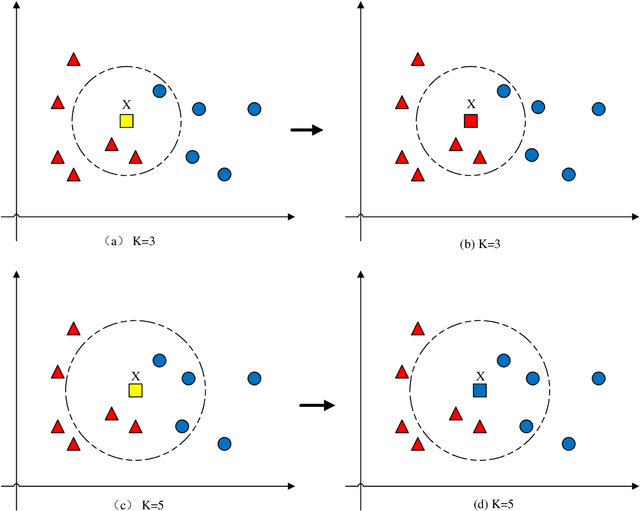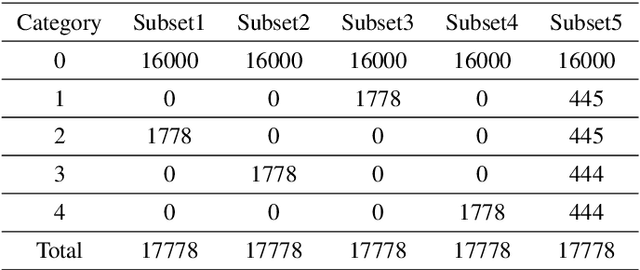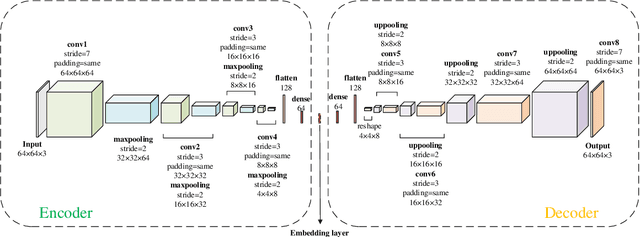Yang Han
MS-BART: Unified Modeling of Mass Spectra and Molecules for Structure Elucidation
Oct 23, 2025Abstract:Mass spectrometry (MS) plays a critical role in molecular identification, significantly advancing scientific discovery. However, structure elucidation from MS data remains challenging due to the scarcity of annotated spectra. While large-scale pretraining has proven effective in addressing data scarcity in other domains, applying this paradigm to mass spectrometry is hindered by the complexity and heterogeneity of raw spectral signals. To address this, we propose MS-BART, a unified modeling framework that maps mass spectra and molecular structures into a shared token vocabulary, enabling cross-modal learning through large-scale pretraining on reliably computed fingerprint-molecule datasets. Multi-task pretraining objectives further enhance MS-BART's generalization by jointly optimizing denoising and translation task. The pretrained model is subsequently transferred to experimental spectra through finetuning on fingerprint predictions generated with MIST, a pre-trained spectral inference model, thereby enhancing robustness to real-world spectral variability. While finetuning alleviates the distributional difference, MS-BART still suffers molecular hallucination and requires further alignment. We therefore introduce a chemical feedback mechanism that guides the model toward generating molecules closer to the reference structure. Extensive evaluations demonstrate that MS-BART achieves SOTA performance across 5/12 key metrics on MassSpecGym and NPLIB1 and is faster by one order of magnitude than competing diffusion-based methods, while comprehensive ablation studies systematically validate the model's effectiveness and robustness.
Reverse-Speech-Finder: A Neural Network Backtracking Architecture for Generating Alzheimer's Disease Speech Samples and Improving Diagnosis Performance
May 23, 2025Abstract:This study introduces Reverse-Speech-Finder (RSF), a groundbreaking neural network backtracking architecture designed to enhance Alzheimer's Disease (AD) diagnosis through speech analysis. Leveraging the power of pre-trained large language models, RSF identifies and utilizes the most probable AD-specific speech markers, addressing both the scarcity of real AD speech samples and the challenge of limited interpretability in existing models. RSF's unique approach consists of three core innovations: Firstly, it exploits the observation that speech markers most probable of predicting AD, defined as the most probable speech-markers (MPMs), must have the highest probability of activating those neurons (in the neural network) with the highest probability of predicting AD, defined as the most probable neurons (MPNs). Secondly, it utilizes a speech token representation at the input layer, allowing backtracking from MPNs to identify the most probable speech-tokens (MPTs) of AD. Lastly, it develops an innovative backtracking method to track backwards from the MPNs to the input layer, identifying the MPTs and the corresponding MPMs, and ingeniously uncovering novel speech markers for AD detection. Experimental results demonstrate RSF's superiority over traditional methods such as SHAP and Integrated Gradients, achieving a 3.5% improvement in accuracy and a 3.2% boost in F1-score. By generating speech data that encapsulates novel markers, RSF not only mitigates the limitations of real data scarcity but also significantly enhances the robustness and accuracy of AD diagnostic models. These findings underscore RSF's potential as a transformative tool in speech-based AD detection, offering new insights into AD-related linguistic deficits and paving the way for more effective non-invasive early intervention strategies.
Unravelling Causal Genetic Biomarkers of Alzheimer's Disease via Neuron to Gene-token Backtracking in Neural Architecture: A Groundbreaking Reverse-Gene-Finder Approach
Feb 06, 2025Abstract:Alzheimer's Disease (AD) affects over 55 million people globally, yet the key genetic contributors remain poorly understood. Leveraging recent advancements in genomic foundation models, we present the innovative Reverse-Gene-Finder technology, a ground-breaking neuron-to-gene-token backtracking approach in a neural network architecture to elucidate the novel causal genetic biomarkers driving AD onset. Reverse-Gene-Finder comprises three key innovations. Firstly, we exploit the observation that genes with the highest probability of causing AD, defined as the most causal genes (MCGs), must have the highest probability of activating those neurons with the highest probability of causing AD, defined as the most causal neurons (MCNs). Secondly, we utilize a gene token representation at the input layer to allow each gene (known or novel to AD) to be represented as a discrete and unique entity in the input space. Lastly, in contrast to the existing neural network architectures, which track neuron activations from the input layer to the output layer in a feed-forward manner, we develop an innovative backtracking method to track backwards from the MCNs to the input layer, identifying the Most Causal Tokens (MCTs) and the corresponding MCGs. Reverse-Gene-Finder is highly interpretable, generalizable, and adaptable, providing a promising avenue for application in other disease scenarios.
From Generalist to Specialist: A Survey of Large Language Models for Chemistry
Dec 28, 2024



Abstract:Large Language Models (LLMs) have significantly transformed our daily life and established a new paradigm in natural language processing (NLP). However, the predominant pretraining of LLMs on extensive web-based texts remains insufficient for advanced scientific discovery, particularly in chemistry. The scarcity of specialized chemistry data, coupled with the complexity of multi-modal data such as 2D graph, 3D structure and spectrum, present distinct challenges. Although several studies have reviewed Pretrained Language Models (PLMs) in chemistry, there is a conspicuous absence of a systematic survey specifically focused on chemistry-oriented LLMs. In this paper, we outline methodologies for incorporating domain-specific chemistry knowledge and multi-modal information into LLMs, we also conceptualize chemistry LLMs as agents using chemistry tools and investigate their potential to accelerate scientific research. Additionally, we conclude the existing benchmarks to evaluate chemistry ability of LLMs. Finally, we critically examine the current challenges and identify promising directions for future research. Through this comprehensive survey, we aim to assist researchers in staying at the forefront of developments in chemistry LLMs and to inspire innovative applications in the field.
Counterfactual Uncertainty Quantification of Factual Estimand of Efficacy from Before-and-After Treatment Repeated Measures Randomized Controlled Trials
Nov 14, 2024Abstract:The ideal estimand for comparing a new treatment $Rx$ with a control $C$ is the $\textit{counterfactual}$ efficacy $Rx:C$, the expected differential outcome between $Rx$ and $C$ if each patient were given $\textit{both}$. While counterfactual $\textit{point estimation}$ from $\textit{factual}$ Randomized Controlled Trials (RCTs) has been available, this article shows $\textit{counterfactual}$ uncertainty quantification (CUQ), quantifying uncertainty for factual point estimates but in a counterfactual setting, is surprisingly achievable. We achieve CUQ whose variability is typically smaller than factual UQ, by creating a new statistical modeling principle called ETZ which is applicable to RCTs with $\textit{Before-and-After}$ treatment Repeated Measures, common in many therapeutic areas. We urge caution when estimate of the unobservable true condition of a patient before treatment has measurement error, because that violation of standard regression assumption can cause attenuation in estimating treatment effects. Fortunately, we prove that, for traditional medicine in general, and for targeted therapy with efficacy defined as averaged over the population, counterfactual point estimation is unbiased. However, for targeted therapy, both Real Human and Digital Twins approaches should respect this limitation, lest predicted treatment effect in $\textit{subgroups}$ will have bias.
Magnetic Preference Optimization: Achieving Last-iterate Convergence for Language Models Alignment
Oct 22, 2024



Abstract:Self-play methods have demonstrated remarkable success in enhancing model capabilities across various domains. In the context of Reinforcement Learning from Human Feedback (RLHF), self-play not only boosts Large Language Model (LLM) performance but also overcomes the limitations of traditional Bradley-Terry (BT) model assumptions by finding the Nash equilibrium (NE) of a preference-based, two-player constant-sum game. However, existing methods either guarantee only average-iterate convergence, incurring high storage and inference costs, or converge to the NE of a regularized game, failing to accurately reflect true human preferences. In this paper, we introduce Magnetic Preference Optimization (MPO), a novel approach capable of achieving last-iterate convergence to the NE of the original game, effectively overcoming the limitations of existing methods. Building upon Magnetic Mirror Descent (MMD), MPO attains a linear convergence rate, making it particularly suitable for fine-tuning LLMs. To ensure our algorithm is both theoretically sound and practically viable, we present a simple yet effective implementation that adapts the theoretical insights to the RLHF setting. Empirical results demonstrate that MPO can significantly enhance the performance of LLMs, highlighting the potential of self-play methods in alignment.
AlignSum: Data Pyramid Hierarchical Fine-tuning for Aligning with Human Summarization Preference
Oct 01, 2024Abstract:Text summarization tasks commonly employ Pre-trained Language Models (PLMs) to fit diverse standard datasets. While these PLMs excel in automatic evaluations, they frequently underperform in human evaluations, indicating a deviation between their generated summaries and human summarization preferences. This discrepancy is likely due to the low quality of fine-tuning datasets and the limited availability of high-quality human-annotated data that reflect true human preference. To address this challenge, we introduce a novel human summarization preference alignment framework AlignSum. This framework consists of three parts: Firstly, we construct a Data Pymarid with extractive, abstractive, and human-annotated summary data. Secondly, we conduct the Gaussian Resampling to remove summaries with extreme lengths. Finally, we implement the two-stage hierarchical fine-tuning with Data Pymarid after Gaussian Resampling. We apply AlignSum to PLMs on the human-annotated CNN/DailyMail and BBC XSum datasets. Experiments show that with AlignSum, PLMs like BART-Large surpass 175B GPT-3 in both automatic and human evaluations. This demonstrates that AlignSum significantly enhances the alignment of language models with human summarization preferences.
J2N -- Nominal Adjective Identification and its Application
Sep 26, 2024



Abstract:This paper explores the challenges posed by nominal adjectives (NAs) in natural language processing (NLP) tasks, particularly in part-of-speech (POS) tagging. We propose treating NAs as a distinct POS tag, "JN," and investigate its impact on POS tagging, BIO chunking, and coreference resolution. Our study shows that reclassifying NAs can improve the accuracy of syntactic analysis and structural understanding in NLP. We present experimental results using Hidden Markov Models (HMMs), Maximum Entropy (MaxEnt) models, and Spacy, demonstrating the feasibility and potential benefits of this approach. Additionally we trained a bert model to identify the NA in untagged text.
SciEval: A Multi-Level Large Language Model Evaluation Benchmark for Scientific Research
Aug 25, 2023Abstract:Recently, there has been growing interest in using Large Language Models (LLMs) for scientific research. Numerous benchmarks have been proposed to evaluate the ability of LLMs for scientific research. However, current benchmarks are mostly based on pre-collected objective questions. This design suffers from data leakage problem and lacks the evaluation of subjective Q/A ability. In this paper, we propose SciEval, a comprehensive and multi-disciplinary evaluation benchmark to address these issues. Based on Bloom's taxonomy, SciEval covers four dimensions to systematically evaluate scientific research ability. In particular, we design a "dynamic" subset based on scientific principles to prevent evaluation from potential data leakage. Both objective and subjective questions are included in SciEval. These characteristics make SciEval a more effective benchmark for scientific research ability evaluation of LLMs. Comprehensive experiments on most advanced LLMs show that, although GPT-4 achieves SOTA performance compared to other LLMs, there is still substantial room for improvement, especially for dynamic questions. The data and codes are now publicly available.
Identifying outliers in astronomical images with unsupervised machine learning
May 19, 2022



Abstract:Astronomical outliers, such as unusual, rare or unknown types of astronomical objects or phenomena, constantly lead to the discovery of genuinely unforeseen knowledge in astronomy. More unpredictable outliers will be uncovered in principle with the increment of the coverage and quality of upcoming survey data. However, it is a severe challenge to mine rare and unexpected targets from enormous data with human inspection due to a significant workload. Supervised learning is also unsuitable for this purpose since designing proper training sets for unanticipated signals is unworkable. Motivated by these challenges, we adopt unsupervised machine learning approaches to identify outliers in the data of galaxy images to explore the paths for detecting astronomical outliers. For comparison, we construct three methods, which are built upon the k-nearest neighbors (KNN), Convolutional Auto-Encoder (CAE)+ KNN, and CAE + KNN + Attention Mechanism (attCAE KNN) separately. Testing sets are created based on the Galaxy Zoo image data published online to evaluate the performance of the above methods. Results show that attCAE KNN achieves the best recall (78%), which is 53% higher than the classical KNN method and 22% higher than CAE+KNN. The efficiency of attCAE KNN (10 minutes) is also superior to KNN (4 hours) and equal to CAE+KNN(10 minutes) for accomplishing the same task. Thus, we believe it is feasible to detect astronomical outliers in the data of galaxy images in an unsupervised manner. Next, we will apply attCAE KNN to available survey datasets to assess its applicability and reliability.
 Add to Chrome
Add to Chrome Add to Firefox
Add to Firefox Add to Edge
Add to Edge